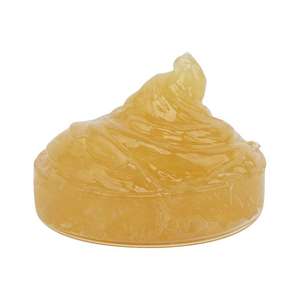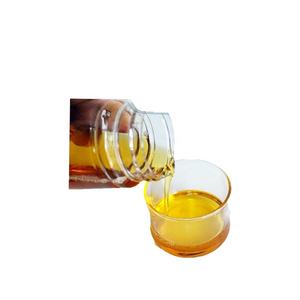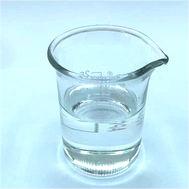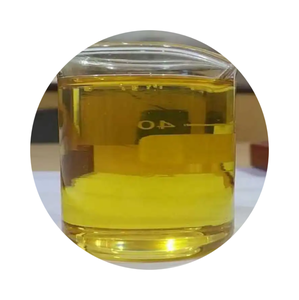One-stop lubrication solution | Discover the way to smoothness | Infomak
Engine Oil: Your Car’s Secret Superhero – Unveiling the Magic of SAE Mineral Lubricant
(High Quality Lubricating Oil Automobile Mineral Engine Oil Sae Lubricant Oil)
Think about your car. It roars to life, takes you places, handles your daily grind. But deep inside its metal heart, there’s a silent hero working tirelessly. It’s not the flashy paint job or the powerful engine block. It’s something much simpler, yet utterly vital: the engine oil. Specifically, we’re talking about high-quality SAE mineral lubricating oil. This stuff is the lifeblood of your vehicle. Forget boring labels; let’s dive into why this golden liquid is your engine’s best friend and guardian.
1. What Exactly is This “SAE Mineral Lubricant Oil”?
Let’s break down that mouthful. “Lubricating oil” is the big umbrella term. It simply means oil designed to reduce friction. Friction is the enemy. When metal parts rub together fast and hard, they get hot, wear down, and can even weld together. Bad news! Lubricating oil steps in. It creates a slippery film between those parts. This film lets them move smoothly, like butter on a hot pan. It cuts down heat and wear dramatically.
“Mineral engine oil” tells us where this oil comes from. It’s derived from crude oil, pumped straight from the earth. Think of it as the classic, traditional engine oil. Refineries process this crude oil, removing impurities and tailoring it for engine use. It’s a well-established, reliable technology. It’s often a solid, cost-effective choice for many drivers and many types of engines.
“SAE” stands for the Society of Automotive Engineers. They set the standards. The SAE rating on the bottle, like SAE 5W-30 or SAE 10W-40, isn’t just random letters and numbers. It’s a code telling you the oil’s viscosity. Viscosity is basically how thick or thin the oil is, how easily it flows. The “W” stands for Winter, showing how well it flows when cold. The second number shows its viscosity at the engine’s normal hot running temperature. Getting the right SAE grade is crucial. It ensures the oil flows properly to protect your engine whether it’s freezing cold outside or you’re cruising on a hot highway.
2. Why Your Engine Absolutely Needs Good Lubricating Oil
Imagine trying to run a marathon without water. Your body would seize up. It’s the same for your engine without proper lubrication. Here’s why pouring in the right mineral engine oil matters so much:
First, fighting friction. Engine parts move incredibly fast. Pistons pump, crankshafts spin, valves open and close. Without that protective oil film, metal grinds on metal. This creates massive heat and causes parts to wear out quickly. Good oil drastically reduces this friction. It keeps things running cool and smooth.
Second, cooling. While the coolant system handles the big heat loads, the lubricating oil plays a supporting role. As it circulates, it picks up heat from hot spots inside the engine, like the piston rings and bearings. It carries this heat away to other cooler areas, helping to manage overall engine temperatures.
Third, cleaning. Your engine isn’t a perfectly clean environment. Combustion creates soot and ash. Tiny metal particles wear off surfaces. Dust can sneak in. The lubricating oil acts like a cleaner. Special additives in the oil help suspend these contaminants. Instead of building up into harmful sludge or clogging passages, the oil holds them. They get trapped by the oil filter when you change it.
Fourth, sealing. Those piston rings need to seal tightly against the cylinder walls. This seal ensures good compression and keeps combustion gases where they belong. A thin layer of lubricating oil helps these rings form a better seal. This improves engine efficiency and power.
Fifth, protecting against rust and corrosion. Moisture can form inside the engine, especially from short trips where it doesn’t fully warm up. Acids can form from combustion byproducts. Good engine oil contains additives that neutralize these acids and form a protective layer on metal surfaces. This fights rust and corrosion, keeping internal parts healthy.
Using high-quality mineral engine oil does all this. It keeps your engine running efficiently, reliably, and for a long time. Skip the oil changes or use cheap stuff? You’re asking for trouble – increased wear, overheating, sludge buildup, and eventually, a costly engine failure.
3. How Does Mineral Engine Oil Actually Work Inside Your Engine?
It’s a continuous cycle, a journey the oil takes over and over. Picture the engine oil sitting in the oil pan at the bottom of the engine when the car is off. When you start the car, the oil pump kicks in. It sucks oil up from the pan. The oil then travels under pressure through channels and galleries – think of them as tiny oil highways inside the engine block.
The oil gets pushed to all the critical areas needing lubrication. It goes to the main bearings that hold the crankshaft. It reaches the connecting rod bearings that link the pistons to the crankshaft. It lubricates the camshaft and valve train components. It even gets sprayed onto the cylinder walls to help the pistons move smoothly. In some engines, it might also lubricate things like turbocharger bearings.
As the oil flows over these hot, moving parts, it does its jobs. It forms that protective film. It picks up heat. It washes away tiny bits of dirt and metal. After doing its rounds, gravity pulls the oil back down into the oil pan. But before it goes back, it usually passes through the oil filter. This filter catches the larger contaminants the oil collected. The cleaned oil waits in the pan, ready for the pump to send it on its next trip.
Over time and use, the oil gets tired. The additives that help it clean, protect, and flow get used up. Contaminants build up, even with the filter. The oil breaks down. That’s why you need regular oil changes. You drain out the old, worn-out oil and the clogged filter. You put in fresh, clean, high-quality mineral engine oil. This restarts the cycle. It gives your engine a fresh supply of its vital protective fluid. Following your car manufacturer’s recommended oil change schedule is non-negotiable for engine health.
4. Where Do We Use Mineral Lubricating Oil? (Beyond Just Cars!)
While we often talk about “automobile mineral engine oil,” its use is much wider. High-quality SAE mineral lubricant oil is a workhorse in many machines:
Cars and Trucks: This is the obvious one. Millions of gasoline and diesel engines in everyday vehicles rely on mineral oil. It’s especially common in older models, many standard sedans, trucks, and SUVs not requiring synthetic. It provides excellent protection for regular driving.
Motorcycles: Many motorcycles, particularly older ones or those with simpler engines, use mineral-based engine oils. It lubricates the engine, transmission, and sometimes even the clutch in a “wet clutch” setup.
Small Engines: Think lawnmowers, chainsaws, generators, and leaf blowers. These small, air-cooled engines often run perfectly well on mineral lubricating oil. It’s affordable and provides sufficient protection for their shorter duty cycles and less demanding operation.
Industrial Machinery: Mineral oils are widely used in factories and workshops. They lubricate hydraulic systems, gearboxes, compressors, and various types of bearings in industrial equipment. The specific SAE grade and formulation vary based on the machine’s needs.
Agricultural Equipment: Tractors, combines, and other farm machinery often have large engines that can be lubricated effectively with mineral oils. It’s a practical choice for heavy-duty applications in demanding environments.
Boats: Marine engines, especially older inboard engines or smaller outboards, might use mineral lubricating oils. Always check the manufacturer’s recommendations, as marine environments pose unique challenges.
So, while your car is a primary user, mineral lubricant oil keeps a vast world of machinery running smoothly. It’s a fundamental product in mechanics and engineering.
5. Mineral Engine Oil FAQs: Your Top Questions Answered
People often have questions about using mineral oil. Let’s tackle some common ones:
Is mineral oil bad for my engine? Absolutely not! When you use the correct SAE grade and quality level specified by your vehicle’s manufacturer, and change it on schedule, mineral oil provides excellent protection. It’s a proven, reliable technology for countless engines.
Can I switch between mineral and synthetic oil? Generally, yes, you can switch back and forth. Modern oils, even mineral ones, are compatible. There’s no need to “flush” the engine if switching types. Just make sure the new oil meets the required specifications (like API SN or SP for gasoline engines) and the correct SAE viscosity for your car. Always refer to your owner’s manual.
How often should I change mineral engine oil? This depends entirely on your vehicle and how you drive. Older recommendations were often 3,000 miles. Many modern cars using mineral oil can go longer – 5,000, 7,500, or even 10,000 miles. Check your owner’s manual! It provides the exact interval. Severe driving conditions (lots of short trips, extreme heat or cold, towing, dusty roads) might require more frequent changes, even with mineral oil.
Does mineral oil work in cold weather? Yes, but viscosity matters. That’s why the SAE rating has the “W” number. A lower “W” number (like 5W or 0W) means the oil flows better when cold. This ensures quick lubrication at startup in freezing temperatures. Using the wrong viscosity (like a thick SAE 20W-50 in very cold weather) can cause poor flow and startup wear.
(High Quality Lubricating Oil Automobile Mineral Engine Oil Sae Lubricant Oil)
Is mineral oil cheaper than synthetic? Yes, typically, mineral engine oil is less expensive to produce. This usually makes it cheaper to buy per quart or liter compared to synthetic or synthetic blend oils. This cost-effectiveness is one reason it remains popular for many applications.







